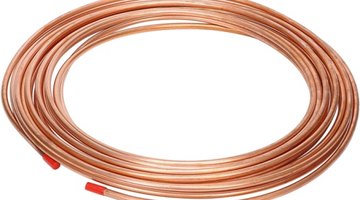Conductors Used in Household Electricity
Conductors are materials that allow electricity to flow freely through them. When the term “conductor” is applied to a material, it means that that material’s electrons are loosely bound and free to move through the material. In houses, this electrical current is used to power electrical appliances.

Copper
Perhaps the most commonly used conductor in household electricity is copper. This is for a variety of reasons. Copper is a very ductile metal, which means that it can be drawn easily into a thin wire without breaking. Copper is also very malleable, which means it will not break or crack when hammered or molded into different shapes. This is not to say that copper is the best conductor. The best pure metal conductor is silver, but silver wires would be prohibitively expensive for most home buyers.
Aluminum
Aluminum wire is a strong competitor to copper wire in homes. It can be less expensive to buy than copper wire, but is not quite as conductive. This means that where a thin copper wire would do, a thicker aluminum wire would be necessary. The appeal of aluminum, other than its price, is conductivity when compared to weight. Aluminum is much lighter than copper. For this reason, it is used not only in homes, but also in aircraft.
Circuit Breakers and Fuses
Quite apart from wires, circuit breakers or fuses are to be found in every home. These are safety devices that are used to regulate the flow of electricity. The simpler of the two is the fuse, which is basically a thin wire encased in glass. The wire melts or vaporizes when the current becomes too strong, breaking the circuit and preventing overheating. The newer of the two devices is the circuit breaker; the difference between the two is that a fuse cannot be reused once “blown.” The circuit breaker, by contrast, can be reset.
Zinc and tin
Common conductors used in fuses and circuit breakers are zinc or tin. Cadmium is occasionally used as well, but most common is zinc due to its low cost. These metals are used to plate the interior metals wherever they will be exposed to air. These metals, in particular, are used in part because of their resistance to corrosion. Zinc, in particular, forms a zinc oxide where it is exposed to air, but this zinc oxide is also very conductive. Zinc and tin are also inexpensive and non-toxic, making them cost-efficient for home use.
References
Photo Credits
- Zedcor Wholly Owned/PhotoObjects.net/Getty Images
- Zedcor Wholly Owned/PhotoObjects.net/Getty Images
More Articles


